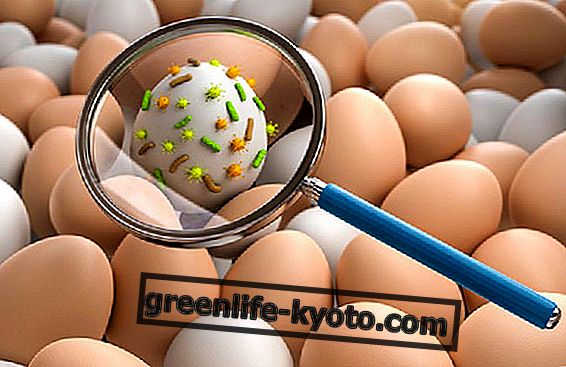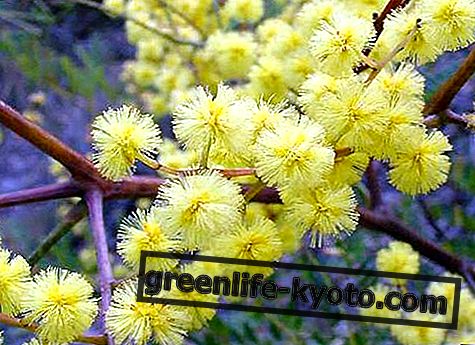
Amaranth is a plant that produces edible seeds that are used in the same way as cereals, but at a botanical level amaranth is not a cereal .
A pseudocereal is defined both for its similarity in use in the kitchen and for its nutritional composition.
Amaranth was a food already known by the ancient populations of the Incas and the Aztecs who cultivated it in their lands, the cradle of origin of this pseudocereal. In fact, the first finds of amaranth seeds date back to Central and Southern Merica and then spread and cultivated in other areas with a warm climate.
The ancient name for this pseudocereal is " Grano degli Dei" meaning the importance of its presence in the diet of the local populations that cultivated it. Today's name derives from the amaranth coloring of its inflorescence (set of flowers); this typical color, similar to a brown red, is given by the presence of particular pigments called betacyanines .
Amaranth belongs to the botanical family of Amaranthaceae and is an annual dicotyledonous herbaceous plant that can grow from half a meter to over 3 meters tall depending on the variety.
In fact, there are more than 60 varieties of amaranth and those that give the best production are the amaranthus cruentus, the amaranth caudatus and the amaranth hypochondriacus. The variety that allows the best cultivation for the same production is the hypochondriacus .
Needs for the cultivation of amaranth
Amaranth prefers a warm temperate climate and therefore needs a protected environment if we want to sow it early. In Northern Italy sowing in open field can take place from March and in general it is advisable to wait at least 1 or 2 months after the last winter frost.
The best position to cultivate amaranth is certainly the sunny one where maximum exposure to the sun is maximum. It does not require any special substances in the soil as it is a rustic plant but likes to have some elements such as nitrogen, phosphorus and potassium.
The irrigations must be very careful because it suffers terribly humidity and water stagnations with the risk of developing diseases or making the plant development difficult; approximately one or two waterings a week are sufficient in the period of maximum sun exposure while in the rest of the period they can be even more sparse.
Amaranth is a plant that tolerates drought well and has found its ideal climate in warm areas, so much so that it has become a spontaneous plant known in Europe almost more as a weed than for its food use.
Pseudocerals: what they are and how to use them
Amaranth sowing
Amaranth is sown by spreading, perhaps by mixing small roundish seeds with sand, so as to have more uniformity in manual sowing.
If you sow seeds in a protected seedbed it will be sufficient to lay the seeds on the ground and cover them with very little soil.
The purchase of seeds for the cultivation of amaranth begins to be required also for plantations of domestic and amateur gardens, therefore it is possible to find amaranth sachets for about 2 euros. We always advise finding seeds from organic farming in order to have a guarantee of better quality that identifies both the origin and the absence of synthetic chemicals in the production of seeds from the mother plant.
The time between sowing and harvesting varies according to the types of amaranth ; the earliest ones take 100 days while others need to mature for at least 160 days before they are ready. Average cultivation quantities require about 10 kg of amaranth seeds per hectare of land.
Amaranth collection
Amaranth is harvested at the end of the flowering which takes place in summer . In fact, in autumn we will see the wilted amaranth flowers and beneath them appear small frutticini, the capsules that contain the seeds, which must be harvested by shaking the amaranth plant so that they stand out independently ; otherwise it is possible to cut the stem on which the set of seeds are present and put it to dry in the shade in a dry place.
Having taken the seeds, we will have obtained the part of the amaranth for food use, then always kept in a dried state.
These seeds can also be found already packed in health food stores, health food stores, shelves dedicated to organic supermarket products or online and we can use them in the kitchen like other cereals.
The major producers of amaranth are the United States, China and India, which in 1970, having recognized the high nutritional properties of this pseudocereal, increased cultivation up to a large-scale production.
However, amaranth is still an excellent agricultural product that can also be grown at home, both in family gardens and on small plots or even in a balcony in the city.
Finally, the amaranth in terms of food also has two other advantages: the first is the absence of gluten which allows it to be used by people with celiac disease or intolerance to wheat; the second is the fact that even its leaves are edible and usable in the same way as spinach.













